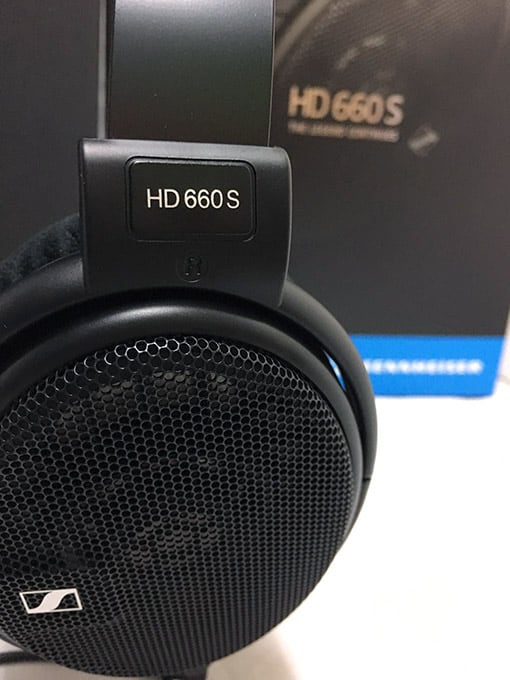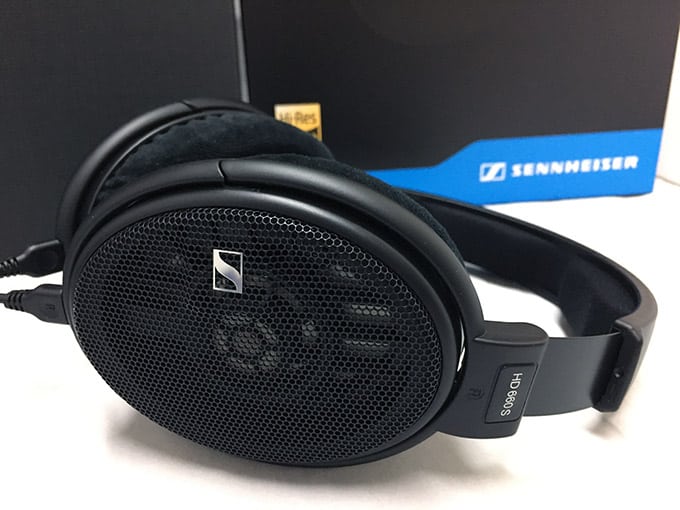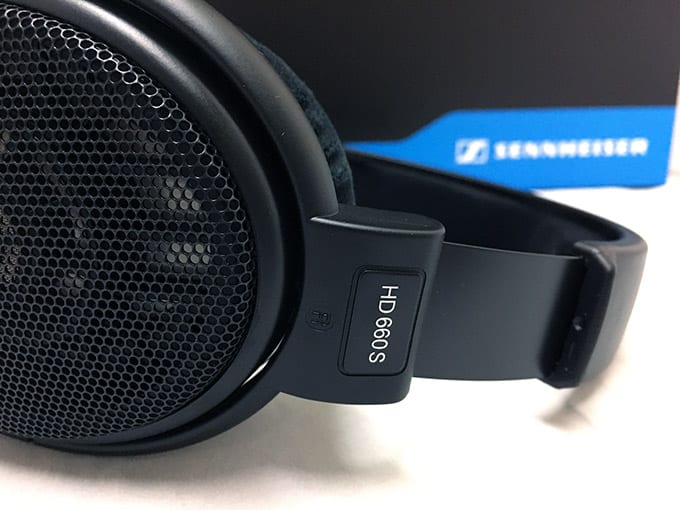The Sennheiser HD 600 and HD 650 headphones are some of the most talked about headphones on the planet. They’re considered excellent reference open-back headphones with only a slight difference in sound signature. The HD 650 is tuned to have better bass response for audiophiles looking to get back some of the bass that’s lost in an open-back. But now there’s a new edition to the HD 600 line. It’s called the Sennheiser HD 660 S and I’ve got a brand new one right here ready for a full review.
In The Box
Inside the box with the HD 660 S you’ll find the following:
- HD 660 S Headphone
- Removable cable with 1/4″ (6.35mm) plug
- Removable cable with 4.4mm balanced Pentaconn (5-pin) plug
- 1/8″ (3.5mm) to 1/4″ (6.35mm) adapter cable

What’s New?
For starters, Sennheiser brought an a darker color scheme to the HD 660 S with matte black and anthracite. They also cut the impedance of the previous headphone in the series by half… down to 150 Ohms. In addition, Sennheiser uses very light aluminum voice coils and match the left and right drivers within +/- 1dB tolerance for each headphone.
The frequency range is expanded to 10Hz – 41kHz which is wider than the HD 650. One other notable feature promised by the HD 660 S is “crisp bass”.
How’s The Build and Fit?
The build of the Sennheiser HD 660 S is almost identical to the 650. The earpads and headband appear to be the same and the overall size and build. The big difference in the build of the HD 660 S is the matte black and anthracite color scheme. It’s tough to tell if this is the same kind of plastic as the HD 650 but to the eye it looks more durable. The shiny gloss of the HD 600 and HD 650 seemed to look more brittle.
The fit of the HD 660 S is also very similar. Although the design is meant to be close and form fitting I find the 600 series headphones to be a bit tight out of the box. This does loosen up a bit over time but I was hoping the 660 S would solve the problem as this headphone is designed for extended listening sessions. As for the earpads and headband, I can’t complain a bit. They’ve got the necessary cushion yet remain firm and don’t feel flimsy.

How Does It Sound?
I messed around with the HD 660 S for a bit skipping from one genre to the next. From pop to electronic, rock to jazz. I also started out using an amp and Hi-Resolution player. All across the board I got similar results. A relatively flat (and somewhat stiff out of the box) sound response. If you’re familiar with the standard “Sennheiser headphone sound signature” you know what I mean. It’s a sound signature I’ve come to know and eventually love.
Bass
The bass response on the HD 660 S was in fact “crisp” as promised. The aluminum coils manage to reveal a bit more of the attack as well and the punchy, meaty part of a bass guitar. Sub-oscillators and synth bass lines were earth shaking and powerful.
Mids
The mids on Sennheiser headphones are a complex thing to describe. Straight out of the box they’re a bit stiff and muted. But as time goes on and you get a proper burn-in time I find the Sennheiser sound signature is one of my favorites… especially in the mid-range. This is also true of the HD 660 S. It’s a little muted at first but in time it really develops a pleasingly crisp mid-range response that compliments nearly all music genres.
Highs
The higher frequency range of the HD 660 S doesn’t initially reveal itself. Just like the mids, it takes a little burn-in time to liven up the very top-end of the spectrum. But you will notice it if you push some SPL’s on the right tracks. Digital recordings and certain pop tracks will reveal the true capability of the HD 660 S and in time it opens up and delivers the high end easier than before.
SPL and Distortion
The specs of the HD 660 S brag a SPL top-end of 104dB and a less than 0.04% distortion using 1kHz at 100dB. These controlled sound tests are certainly reasonable bench test but I like to just get down to the real deal and run the “Butch Vig SPL test” with some Nirvana. The HD 660 S performed quite well. Even at intense levels, this headphone remained tight and unflappable. It was only at the very top end that I could hear a little bit of distortion.
Soundstage
The Sennheiser HD 660 S is an open-back headphone meaning it’s only designed for use at home or in the studio because the sound leaks out. The benefit of this feature, of course, is soundstage… a wide stereo spectrum of sound that you won’t find in a closed-back headphone. Like its’ predecessors, the HD 660 S displays an ample amount of soundstage.
Straight From A Smartphone?
Sennheiser would have you believe that you can just go and run the HD 660 S straight from a smartphone. While it’s twice as easy to power this headphone it’s a bit of a stretch to use a smartphone directly. I tried it and the sound did play out but I found myself pushing the volume all the way up and needed more. So do yourself a favor and always use an amplifier with the HD 660 S.
Final Analysis
In conclusion, the Sennheiser HD 660 S is the best so far in the 600 line. The sleek matte black look, low impedance, improved drivers and optional balanced cable all add up to more than you’ll get with the previous headphone models. It’s easier to drive and features a crisp bass response well suited for audiophile listening or even studio reference. Priced at just under $500, the HD 660 S is a budget-friendly headphone for musicians and music fanatics alike.
The Sennheiser HD 660 S is now in stock at Audio46.
Get the best price on the Sennheiser HD 660 S at Audio46 Headphone Store.
This headphone is also available on Amazon. Before purchasing, be sure to verify you are ordering from an authorized Sennheiser dealer.

Specifications
Impedance: 150 Ω
Connector: Stereo jack plug, gold-plated 6.35 mm, unbalanced, 3-pin 4.4 mm, balanced, 5-pin
Frequency response: 10 – 41,000 Hz (-10 dB)
Sound pressure level (SPL): 104 dB at 1V 1kHz
Ear coupling: Over-ear (circumaural)
THD + N, total harmonic distortion and noise: < 0,04% (1 kHz, 100 dB)
Transducer principle (headphones): Dynamic, open
Weight w/o cable: Approx. 260 g (without cable)
Compare the ranking of various headphones, earbuds and in-ear monitors using our tools.
Discuss this, and much more, over on our forum.
---MAJORHIFI may receive commissions from retail offers.















